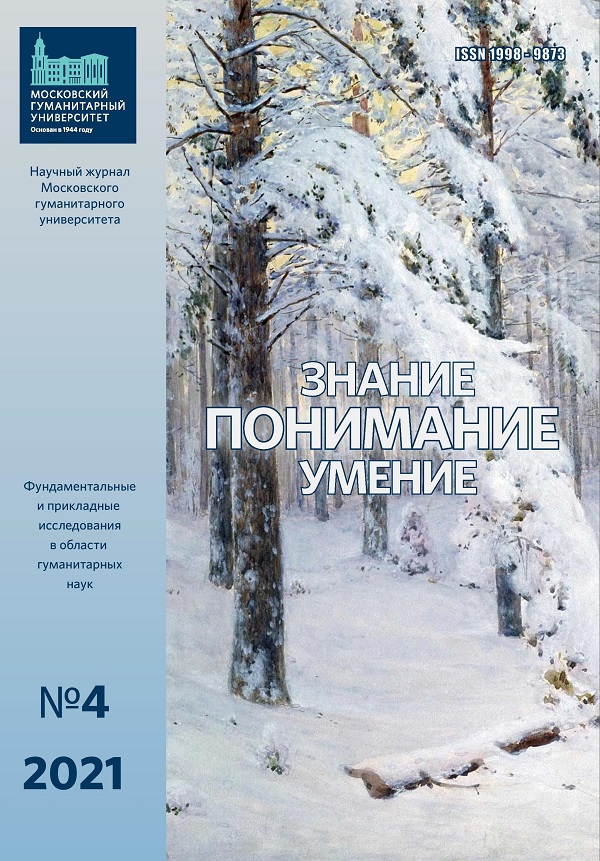Main page / "Knowledge. Understanding. Skill" Journal / Contents / 2014 / No. 3
Fursov A. I. On Some Western Theories of “Really Existing Socialism”
(Moscow University for the Humanities,
The Institute of System and Strategic Analysis, Moscow)
Abstract ♦ The article deals with the problem of the applicability of two theories of Western social and political science to the Soviet society (“really existing socialism”, “historical communism”). These are the theory of totalitarianism and the interpretation of the Soviet society which treats it as a resurrection of a pre-capitalist order — either feudalism or the “Asiatic” mode of production.
The article shows a critical qualitative distinction between the Third Reich and the USSR. The former belonged to the capitalist system, it was a bourgeois society with antagonistic classes — the bourgeoisie and the proletariat, with private property, market, formal and institutionalized differentiation of social life into public and private spheres. In the latter case, we have systemic anticapitalism, a socialist society based on the negation of private property, class exploitation and free market. There was also a significant dissimilarity between the two ideologies, which reflected crucial differences in the nature of respective social orders.
The Soviet ideology was part and parcel of the Enlightenment geoculture and represented the left project of the European Modern. The Nazi ideology had a particularistic nature of a racist-ethnic kind; it negated the Enlightenment and its values.
The attempt of the proponents of totalitarian theory in its “red-brown” version (i.e. the version which equates the USSR and the Third Reich as just the “left” and “right” sides of one and the same “totalitarian coin” using the argument of “total control”) to save it fails on several counts. First, in the USSR — in contrast to Nazi Germany — total social control was not achieved. Secondly, the so-called “total control” or the will to establish it is characteristic for most social structures in history, from ancient Egypt, traditional China and absolutist France to contemporary corporations. In such case, totalitarianism would appear as universal all-historical phenomena, and the term/concept itself loses its scientific character: totalitarianism everywhere = totalitarianism nowhere.
“Red-brown” version of totalitarianism is not just a nonscientific scheme, but an antiscientific and a propagandist one. Its aim is to equate the USSR and Nazi Germany to be able to blame the USSR for unleashing the Second World War. But the main aim is to conceal and to blacken the only real alternative to capitalism in history — the Soviet order based on the ideas of social justice and equality. These features were determined by the evolution of Russian history and by its logic which negated capitalism.
One more inadequate interpretation is the “real socialism” as a resurrection of pre-capitalist order — of feudalism or “Asiatic” mode of production (“oriental despotism”). First, in contrast to pre-capitalist societies, the USSR was an anticapitalist society. While capitalism was born out of one of pre-capitalist societies — the feudal one, “real socialism” emerged on the basis of capitalism as its negation. It was capitalism with a “minus” sign. Secondly, “real socialism” was a highly developed industrial society. Thirdly, it was a modern and not a traditional society, with modern institutions, education, technology, type of family etc. Fourthly, the USSR was a “mass society”, i.e. the society in which individuals formed their collectivities, while in pre-capitalist society it had been this or that form of collectivity (Gemeinwesen) which had defined an individual.
A superficial similarity between historical communism and “pre-capitalisms” is of a negative character — all of them are noncapitalist forms. But this does not mean they belong to a qualitatively one and the same class. Birds and reptiles are not mammals, but it does not bring them together in one and the same class of living creatures.
Keywords: “really existing socialism”, historic communism, USSR, CPSU, Third Reich, totalitarianism, capitalism, pre-capitalist society, “Asiatic” mode of production.
Fursov Andrey Ilyich, Candidate of History, Director, Centre of Russian Studies, Institute of Fundamental and Applied Studies, Moscow University for the Humanities; Director, Institute of System-Strategic Studies; Member, International Academy of Science (Innsbruck, Austria); Member, Union of Writers of Russia. Postal address: 5 Yunosti St., Moscow, Russian Federation, 111395. Tel.: +7 (499) 374-59-61. E-mail:
rusint@bk.ru

Citation: Fursov, A. I. (2014) O nekotorykh zapadnykh teoriiakh «real'nogo sotsializma» [On Some Western Theories of “Really Existing Socialism”]. Znanie. Ponimanie. Umenie, no. 3, pp. 81–93. (In Russ.).
Submission date: 30.05.2014.
RUSSIAN VERSION
REFERENCES
Andropov, Yu. V. (1983) Izbrannye rechi i stat'i [Selected Speeches and Articles]. 2nd edn. Moscow, Politizdat Publ. 320 p. (In Russ.).
Siladi, A. (1994) Totalitarnye kul'tury v XX veke: religiia i rynok [Totalitarian Cultures in the 20th Century: Religion and Market]. Obshchestvennye nauki i sovremennost', no. 3, pp. 151–166. (In Russ.).
Semenov, V. A. (1991) Sovetskaia sistema i massovaia produktsiia [Soviet System and Mass Production]. Pokupatel', no. 11, pp. 3–10 (In Russ.).
Grunberger, R. (1971) The 12-Year Reich: A Social History of Nazi Germany, 1933–1945. New York, Ballantine Books. vi, 602 p.
Hayes, C. J. H. (1940) The Novelty of Totalitarianism in the History of Western Civilization. Proceedings of the American Philosophical Society, vol. 82, no. 1, Symposium on the Totalitarian State, pp. 91–102.
Neumann, F. (1944) Behemoth: The Structure and Practice of National Socialism, 1933–1944. New York, Oxford University Press. xix, 649 p.
Shirer, W. L. (1950) The Rise and Fall of the Third Reich: A History of Nazi Germany. New York, Fawcett Crest. 1599 p.
|
|
|
 The No. 4 2021 of the
The No. 4 2021 of the
Journal "Knowledge.
Understanding. Skill"
is issued
|
|
|
|